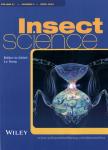Impact of habitat diversification on arthropod communities: A study in the fields of Chinese cabbage, Brassica chinensis
Impact of habitat diversification on arthropod communities: A study in the fields of Chinese cabbage, Brassica chinensis作者机构:Institute of Applied Ecology Research Centre for Biodiversity and Eco-Safety Fujian Agriculture and Forestry University Fuzhou China
出 版 物:《Insect Science》 (昆虫科学(英文版))
年 卷 期:2007年第14卷第3期
页 面:241-249页
核心收录:
学科分类:09[农学] 0903[农学-农业资源与环境] 0904[农学-植物保护] 090401[农学-植物病理学] 090402[农学-农业昆虫与害虫防治]
基 金:福建省科技厅项目
主 题:arthropod community community composition community architecture diversity habitat
摘 要:Field trials were carried out from June to August in 2004 at Wuyishan (Wuyi Mountains), Fujian province, China, to determine the effects of habitat diversification on arthropod communities. Two Chinese cabbage, Brassica chinensis, field 1 (F1) and field 2 (F2) surrounded by diverse vegetable cultivars were selected, while a monoculture of Chinese cabbage served as the control field (CK). The results showed that: (i) when comparing insect abundance of each order between different habitats, significantly higher numbers of lepidopterous insects (39.76% from the each order) and lower densities of Hymenoptera (19.82%) were found in CK than in F1 and F2; (ii) compared with CK, F1 and F2 had a lower percentage of species richness and an abundance of herbivorous insects, but increased richness, abundance and biodiversity of predatory insects; (iii) no differences were observed in neutral insects' guild between different fields; and (iv) the dominant species for each guild depends on the habitat types and sampling dates. This study suggests that intercropping could conceivably be used in these habitats to increase the population of natural predators, thus achieving desirable and ecologically friendly results in vegetable fields.



